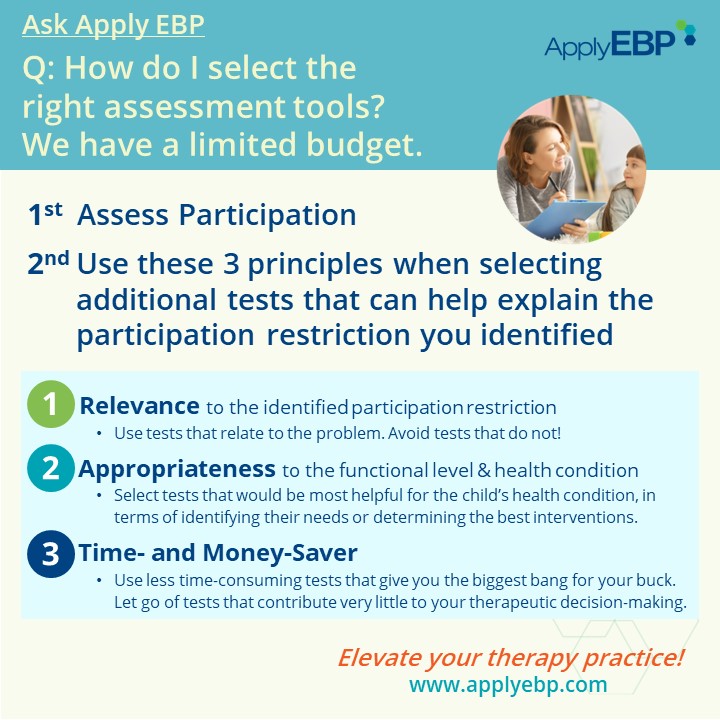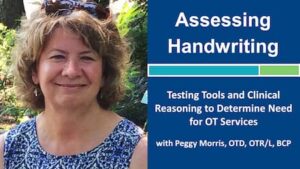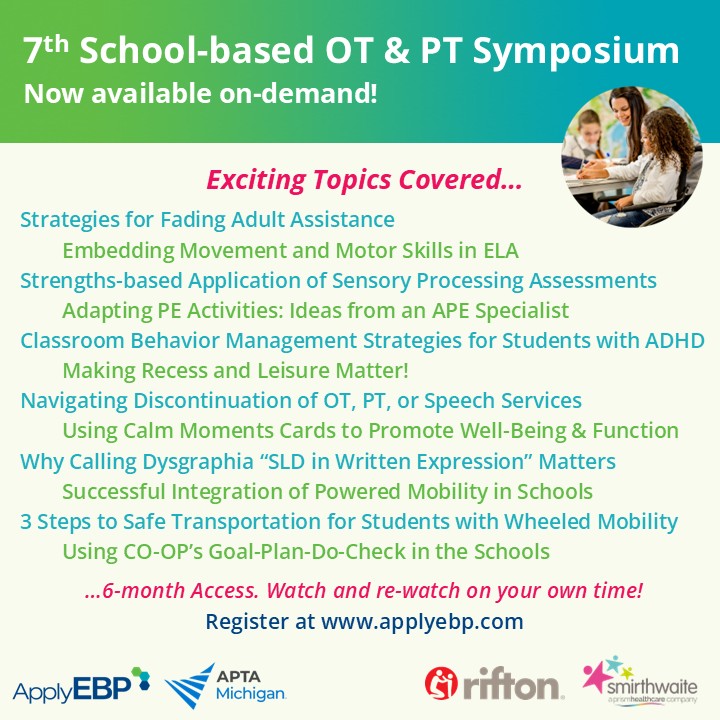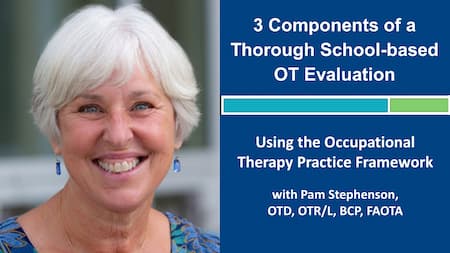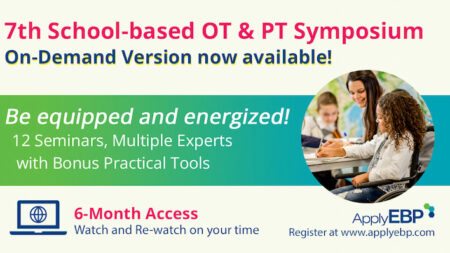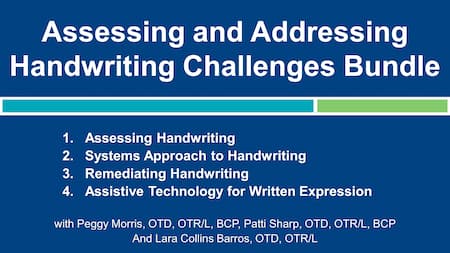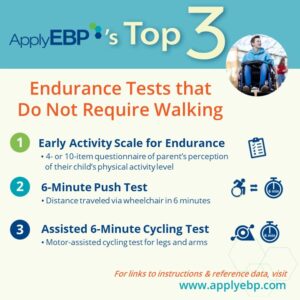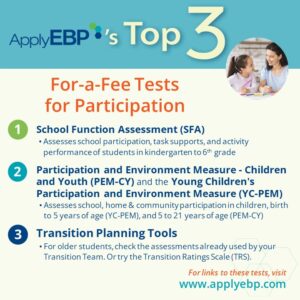Ask Apply EBP
3 Principles for Selecting Tests
Q: How do I select the right assessment tools? We have a limited budget.
A: In a previous article, we recommended that assessments should start at the Participation Level, with a test like the School Function Assessment or a skilled observation in the real environment (aka contextual observation or ecological assessment).
If you have not yet read that article “Must-Have Test for Your School-based Assessment”, click here and read it first.
Let’s say that after testing at the Participation Level, you have found participation restrictions, then it is time for you to use tests at the Activity and Body Function & Structure Levels that will help you determine potential factors that explain the participation restriction.
Selecting Tests at the Activity and Body Function & Structure Levels
When selecting tests, we are often influenced by:
-
-
- What we always use
- This lacks the individualized decision-making for each child’s particular situation
- What we already have
- We’ve often heard clinicians say that they use a test because it is available to them and they “need a standardized test in their report.” Or that, even if they want to use another test, they have a limited budget.
- The great news is that there are many tests that are available for free! There are also many tests that are “one-time-buys”. You can print the testing forms over and over again – no need to purchase new forms every time. Stand by…we will go through our favorite assessment tools for various purposes (e.g., walking, writing, balance, etc.) in future articles on assessment.
- What we always use
-
We suggest that you do not default to the above…what we always use, and what we already have. But instead, use a clinical reasoning process where every test you conduct is like a step in your detective work in your quest to help the child succeed.
As mentioned above, start with a global participation test to identify the problem(s)…then we narrow down to what other tests are necessary to help us explain the participation restriction. Every test conducted should help you decide whether additional tests are needed and if so, which test it should be!
3 Principles for Test Selection
-
- Relevance to the child’s identified participation restriction
-
- Select tests that you think can help explain the student’s specific situation.
- For example, if Maria is identified as having a problem in physical education, based on your observation, what can potentially help explain the problem?
- You may want to use a coordination test if you noticed that she had difficulty executing the motor tasks
- You may want to use a sensory processing test if you noticed that she was covering her ears or is participating less as the gym gets louder or more chaotic
- You may want to use an endurance test if she can start an activity but needs to stop after a few seconds or minutes
- For example, if Maria is identified as having a problem in physical education, based on your observation, what can potentially help explain the problem?
- On the other hand, do not use any tests that do not contribute to your ongoing clinical reasoning
- In Maria’s case above, if you did not see the areas of coordination, sensory processing, and/or endurance as the potential cause, then you do not need to test any of those particular areas
- Select tests that you think can help explain the student’s specific situation.
-
- Appropriateness to the child’s level of function and health condition
- Health Condition: Some tests are created for children of any health condition, but sometimes there are better tests for specific health conditions or diagnoses. Using these diagnosis-specific tests can help you determine what intervention may be needed. For example:
- You need to use the Manual Ability Classification Scale (MACS) for children with Cerebral Palsy to help you predict future upper extremity function, and determine the best intervention approach to use now (e.g., to guide exploration of alternative performance of a task, or to use an assistive technology, etc.)
- Specific tests can help you identify whether a child has probable Developmental Coordination Disorder (DCD), in which case, you should utilize the most effective evidence-supported interventions for DCD (e.g., CO-OP, motor learning strategies) (Blank et al, 2019; Dannemiller et al, 2020)
- Specific tests that capture the progression of Duchenne Muscular Dystrophy may help you predict when to start the process of ordering a wheeled mobility device (e.g., NorthStar Ambulatory Assessment)
- Age: Check the age or grade level validity of the test
- Functional level: Administer tests that are appropriate for the child’s abilities.
- For example, do not administer an instruction-heavy test like the Peabody Developmental Motor Scale for a 5-year-old who has difficulty understanding and following directions, as the child will surely fail, not because of poor motor ability, but because they cannot follow the instructions. In this case, use a “self-report test” like the DAYC-2 where the parent or teacher reports to you what the child is able to do.
- For balance, you may want to use the Early Clinical Asssessment of Balance (ECAB), instead of the Pediatric Balance Scale (PBS), for children with more head and trunk control challenges.
- Health Condition: Some tests are created for children of any health condition, but sometimes there are better tests for specific health conditions or diagnoses. Using these diagnosis-specific tests can help you determine what intervention may be needed. For example:
- Time- and money-saver
- Time is a limited commodity. And funding for test purchase is even more so. Since the use of multiple tests for decision-making is best practice, select tests that give you the biggest bang for your buck in the shortest time possible. And avoid the least helpful tests. Some examples:
- Both the Bruininks-Oseretsky Test (BOT) and the Movement Assessment Battery for Children (Movement-ABC) can help detect motor coordination issues. But the BOT has 53 items, while the Movement-ABC only has 8.
- Try quick functional tests like the Timed Up and Go (TUG) and Timed Floor to Stand (TFTS). In addition to being quick ways to look at ambulation, balance, and transfers skills, these 2 tests are easily relatable to a participation restriction (see #1 above), for example, for a child who has difficulty moving from one area or seating surface to another in the classroom environment.
- We know now that visual perception contributes very little to the variance of handwriting, and that visual perception interventions in isolation do not help improve handwriting (Grajo et al, 2020; Novak & Honan 2019; Denton et al, 2006). So, if you are assessing for written expression restrictions, can you skip the time-consuming and expensive visual perception and visual motor integration tests? Imagine all the things you can do with the time you gained! For example…
- Use tests for handwriting legibility (i.e., written work readability). Many of them are shorter, and some are even free (more on these in future articles).
- Or you can gather handwriting samples and calculate the percentage of word legibility, and compare them with their classroom peers.
- Learn more from Peggy’s Assessing Handwriting on-demand webinar, or the Experts Series: Assessing and Addressing Handwriting Challenges.
- Time is a limited commodity. And funding for test purchase is even more so. Since the use of multiple tests for decision-making is best practice, select tests that give you the biggest bang for your buck in the shortest time possible. And avoid the least helpful tests. Some examples:
- Relevance to the child’s identified participation restriction
As a final reminder, IDEA does not require the use of standardized tests. So you can gather data through other means, such as measuring distances walked, counting written work productivity, or recording the amount of time engaging in an activity compared to their peers. And then use the principles above for when you need to use a standardized test to complement your other data-gathering results.
Great News! We started a series of articles on our Top 3 Tests for various situations (e.g., for endurance, for handwriting, for DCD, etc.). Scroll below to find the list to go directly to the Top 3 Tests you are interested to learn about next.
If you would like to learn more about selecting and organizing your assessment and for interventions, check out:
List of our Top 3 Tools for Assessment
Here is the current list:
More Top 3 articles to come. Bookmark this page and check regularly, or join Apply EBP Facebook Discussion Group to be among the first to learn about them.
——————————–
References:
Blank, R., Barnett, A. L., Cairney, J., Green, D., Kirby, A., Polatajko, H., … & Vinçon, S. (2019). International clinical practice recommendations on the definition, diagnosis, assessment, intervention, and psychosocial aspects of developmental coordination disorder. Developmental Medicine & Child Neurology, 61(3), 242-285.
Dannemiller, L., Mueller, M., Leitner, A., Iverson, E., & Kaplan, S. L. (2020). Physical therapy management of children with developmental coordination disorder: an evidence-based clinical practice guideline from the Academy of Pediatric Physical Therapy of the American Physical Therapy Association. Pediatric physical therapy, 32(4), 278-313.
Denton, P. L., Cope, S., & Moser, C. (2006). The effects of sensorimotor-based intervention versus therapeutic practice on improving handwriting performance in 6-to 11-year-old children. The American Journal of Occupational Therapy, 60(1), 16-27.
Grajo, L. C., Candler, C., & Sarafian, A. (2020). Interventions within the scope of occupational therapy to improve children’s academic participation: a systematic review. The American Journal of Occupational Therapy, 74(2), 7402180030p1-7402180030p32.
Individuals with Disabilities Education Act: https://sites.ed.gov/idea/
Manual Ability Classification System: https://macs.nu/
Novak, I., & Honan, I. (2019). Effectiveness of paediatric occupational therapy for children with disabilities: A systematic review. Australian occupational therapy journal, 66(3), 258-273.
Find More Answers to Your Questions in Our...
Featured School
Symposium
7th Online School-based OT and PT Symposium - On-Demand Version
- Watch and re-watch on your own time
- On-Demand Version
- OTs, OTAs, PTs and PTAs
- $399-449
Featured Live
Workshop
6th Online School-based OT and PT Symposium - On-demand Version
- Watch and re-watch on your own time
- On-Demand Version
- OTs, OTAs, PTs and PTAs
- $399-449
Featured On-Demand
Webinar
Everything's Measurable! OT & PT Tests
Featured Webinar
Bundle
Assessing and Addressing Handwriting Challenges Bundle
Have a question?
Submit here…
*Clicking submit will send your question directly to our email inbox. Your name and email will let us know that your submission is real (not spam). We will not include these in our posts, unless you tell us to include your name. Please read our privacy policy here.
All infographics and videos on www.applyebp.com are intellectual properties of Apply EBP, LLC
You may use the infographics and videos for free for any non-commercial, educational purposes. Please cite the source as “Apply EBP, LLC” and a link to the source article. If you plan to use any infographic or video for commercial purposes (i.e., for profit), please email Carlo@applyebp.com to obtain a written permission. Permission can be granted on a case-by-case basis.

